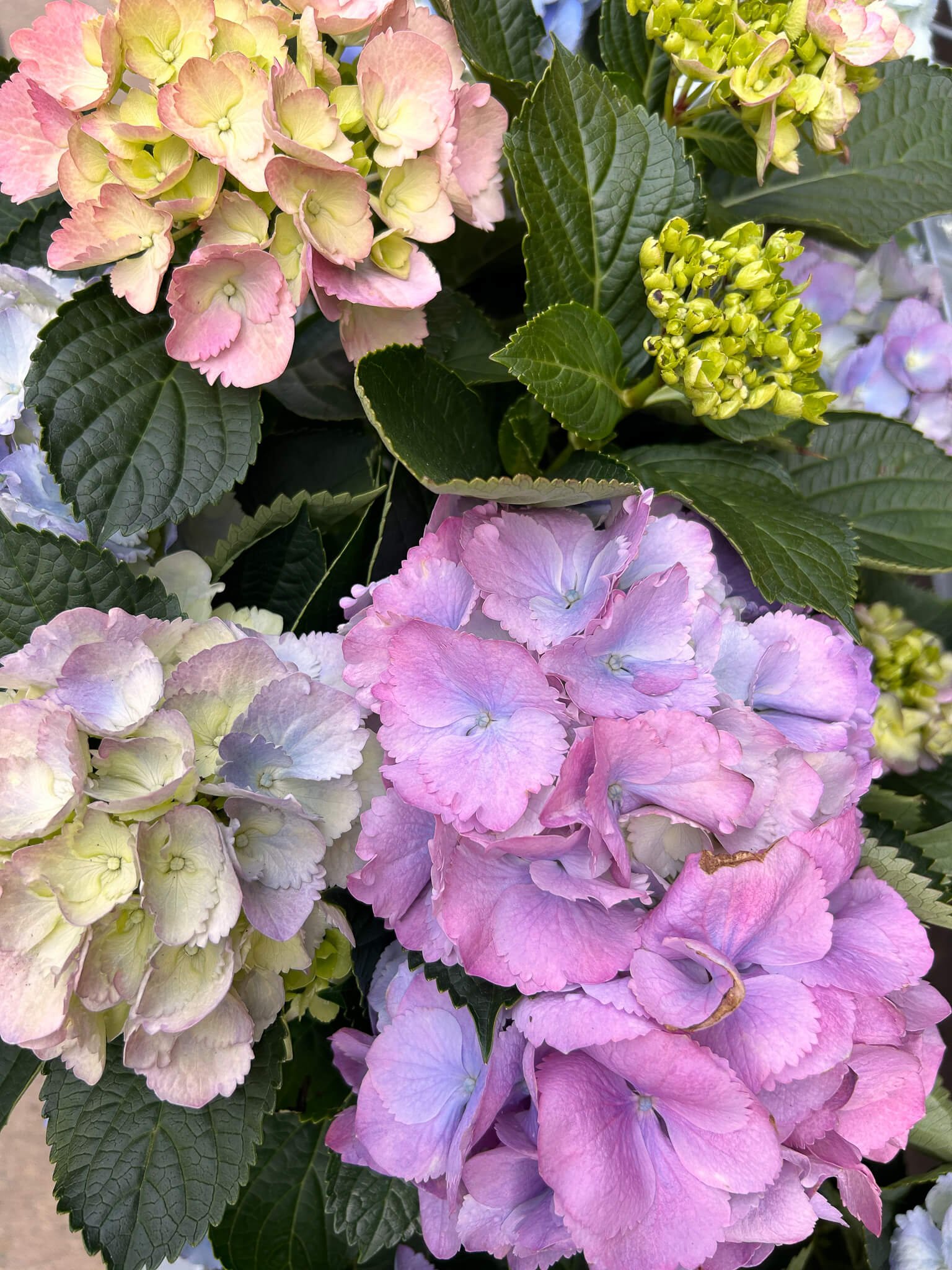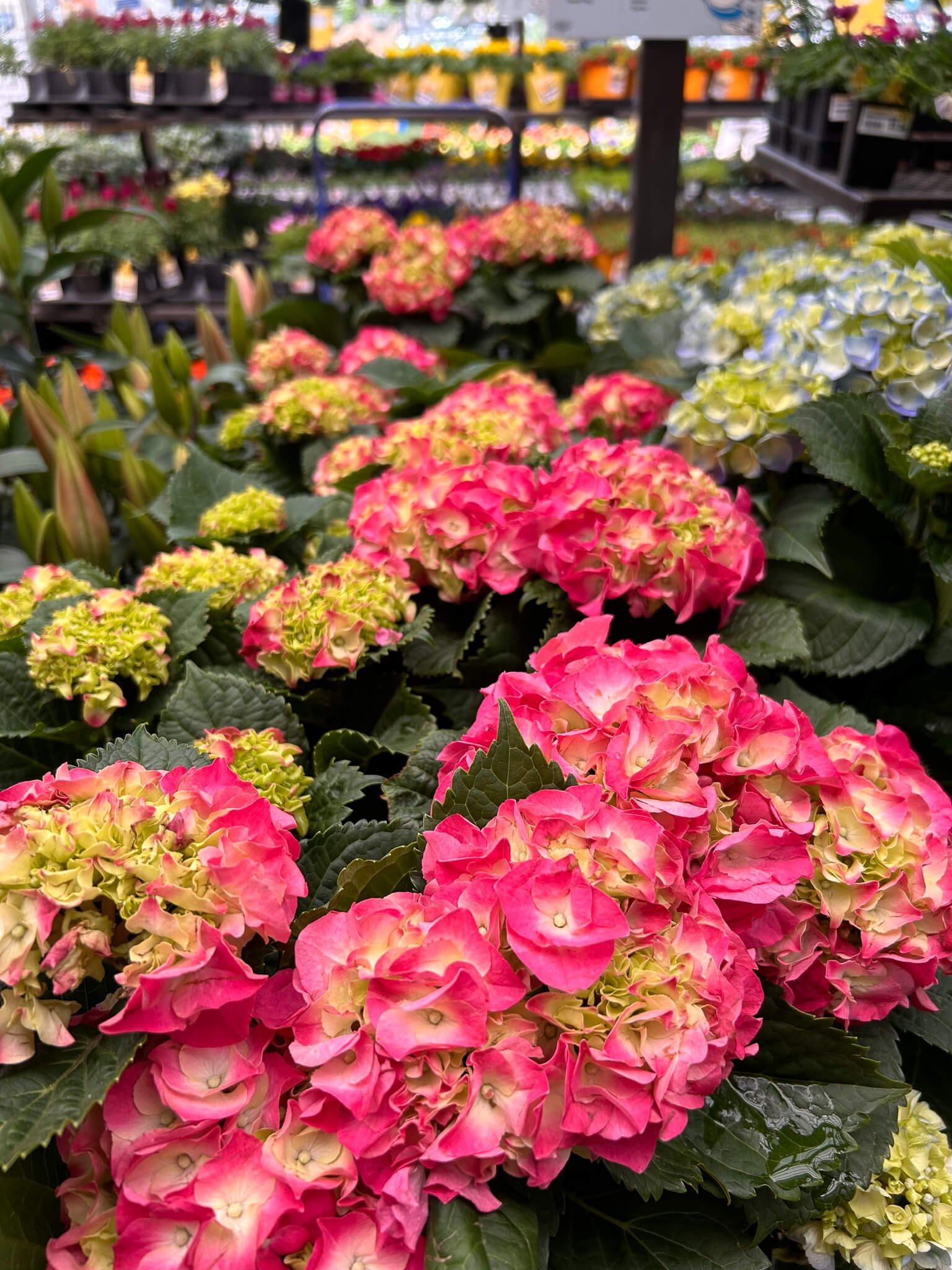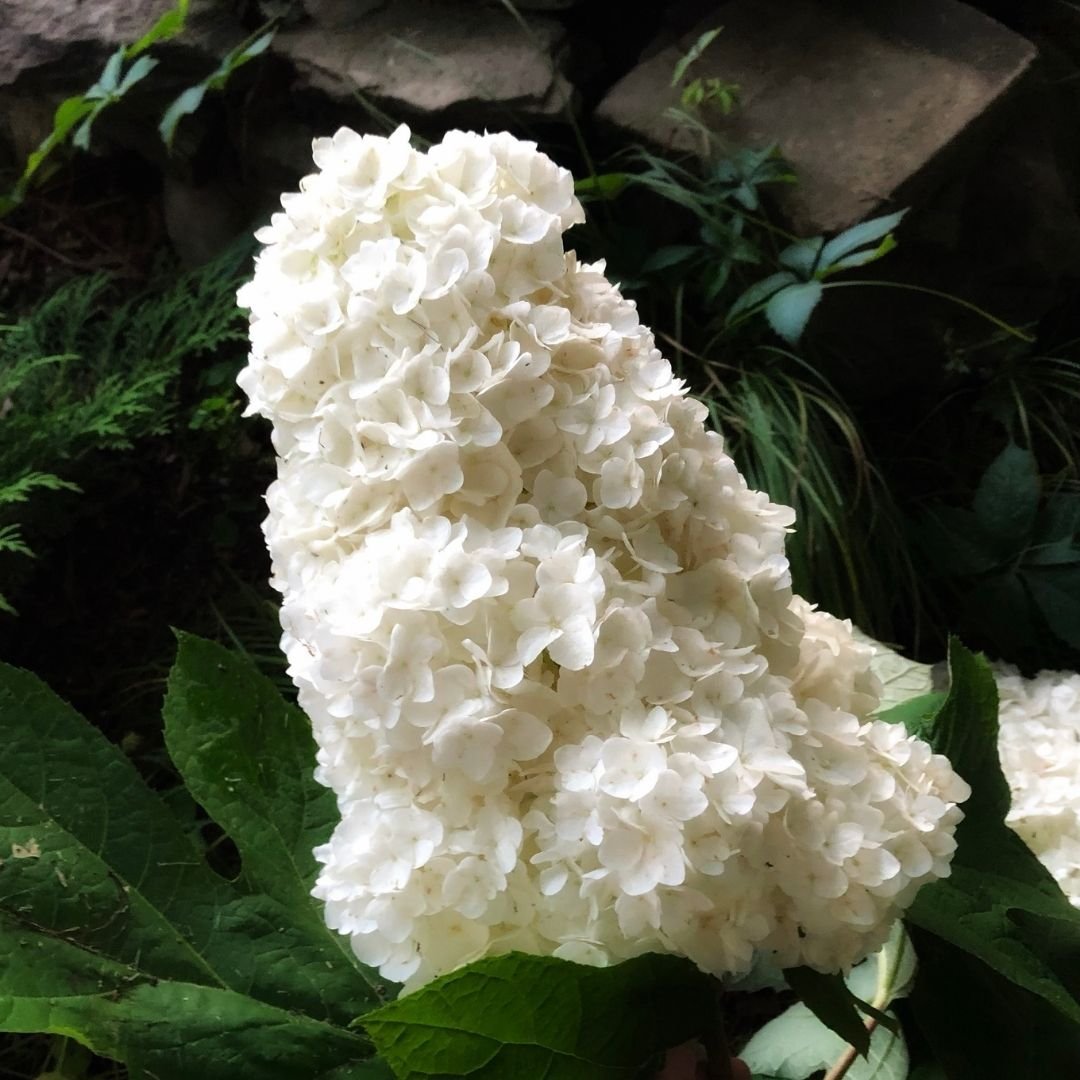Discover the Resilient Mountain Hydrangea
Cover image: Tuff Stuff Top Fun® Reblooming Mountain Hydrangea courtesy of Proven Winners, provenwinners.com
This reliable hydrangea resists frost damage and blooms all summer long.
If late frosts keep sabotaging your hydrangea blooms, meet your new garden hero: the mountain hydrangea (Hydrangea serrata).
Native to the mountains of Korea and Japan, this compact, hardy shrub for zones 5 - 9 shrugs off spring’s mood swings better than the popular bigleaf hydrangeas.
Thanks to a longer period of dormancy and later bloom time, mountain hydrangeas are far less likely to lose their buds to frost. This results in more dependable and consistent flowering, all summer long!
Mountain hydrangeas have lacecap or mophead blooms, which can change from blue to pink depending on soil pH.
Dark green, serrated leaves turn stunning shades of burgundy and red in autumn.
These shrubs thrive in partial shade with cool, moist soil and resist wilting better than bigleaf varieties.
Plus, they’re low-maintenance and rarely bothered by pests or disease. If wild spring weather swings are causing problems for your bigleaf hydrangeas, this resilient beauty might be the perfect fit!
Curious about the best planting spots, care tips, and whether deer find it tasty? Read on to find out!
Tuff Stuff Top Fun® Reblooming Mountain Hydrangea. Image courtesy of Proven Winners, provenwinners.com
How to Grow Mountain Hydrangea
Planting: The best time of year to plant a mountain hydrangea is in the spring or fall, giving the roots time to establish before the onset of extreme hot or cold weather. Water deeply immediately after planting.
Location: Choose a location with well-drained soil that is rich in organic matter. Mountain hydrangeas prefer soil that retains moisture but does not become waterlogged. Select a spot with partial shade - while mountain hydrangea can tolerate full sun, it prefers partial shade and protection from the intense afternoon sun.
Soil: Amend the soil with organic matter, such as compost, shredded leaves, or Leaf-gro®, to improve drainage and soil fertility. If you would like your mountain hydrangea to bloom specifically pink or blue, consider getting a soil test and adding either sulfur or lime to the soil. Add sulfur for blue flowers and lime for pink blooms.
Mulch: Apply a layer of organic mulch around the base of the plant to retain soil moisture, regulate temperature, and suppress weeds.
Watering: Keep the soil consistently moist but not waterlogged, especially during periods of drought. Deep watering is preferable to encourage the development of a strong root system (Are you in a drought? Check the U.S. Drought Monitor).
Fertilization: Hydrangeas typically do not need fertilization when they are given the rich, fertile soil they prefer. Each spring, spread a layer of compost, shredded leaves or Leaf-gro® around the base of your hydrangea, being careful to keep it away from the base of the shrub.
Pruning: Mountain hydrangeas bloom on old wood and look their best with minimal pruning. If needed, prune to shape in late summer when flowering has finished. Avoid pruning in fall, winter, or early spring as you risk removing flower buds and diminished flowering. Do not cut back mountain hydrangeas in the fall.
Pest and Diseases: Mountain hydrangeas are relatively pest resistant; aphids are an occasional problem. Mountain hydrangeas are prone to powdery mildew and leaf spot - ensure good air circulation to minimize the risk of diseases, and practice good watering habits (see “How to Water your Plants” to brush up on your watering skills).
Mountain Hydrangea: Sun or Shade?
Mountain hydrangeas thrive in partial shade (2-4 hours of direct sunlight per day).
While they can tolerate some sunlight, mountain hydrangeas prefer dappled or filtered light, with protection from the intense hot afternoon sun.
In hot climates, providing them with morning sun and afternoon shade can help prevent their flowers and leaves from wilting and scorching.
In cooler regions, they may tolerate more sun, but protection from harsh afternoon sunlight is still recommended.
Tuff Stuff Ah-Ha® Reblooming Mountain Hydrangea
Where to Plant Mountain Hydrangea
Mixed Border Planting: Create a mixed border planting with mountain hydrangeas along with other complementary shade-loving plants such as astilbe, ferns, and Japanese forest grass. This will add layers of texture and color to your garden.
Woodland Garden: Incorporate mountain hydrangeas into a woodland garden setting. Under the dappled shade of trees, these hydrangeas will thrive and provide a provide flowers all summer long.
Container Gardening: Use larger containers, pots, or planters to showcase mountain hydrangeas in a shadier corner of a patio, deck or front porch.
Accent Planting: Use mountain hydrangeas as accent plants to highlight certain areas of the garden. Planting near a water feature or along a pathway can draw attention to these beautiful shrubs.
Foundation Planting: Incorporate mountain hydrangeas into your foundation planting to add visual interest and soften the lines of your home. They work well when paired with partial-shade loving evergreen shrubs like Himalayan sweetbox (Sarcococca hookeriana var. humilis) or spreading Japanese plum yew.
Mass Planting: Create a striking display by mass planting mountain hydrangeas in larger garden areas, like a shady slope or property line. Soften a wooden fence with a row of mountain hydrangeas running along the length, or fill up a shaded side yard with a mass planting of mountain hydrangeas next to a stepping stone pathway.
How to Change the Color of Mountain Hydrangea Flowers
You can change the color of your mountain hydrangea blooms by manipulating the pH of the soil.
The pH level affects the availability of aluminum in the soil, in turn influencing the color or hydrangea flowers.
Adding aluminum sulfate, garden sulfur, or organic matter makes the soil more acidic and will turn bigleaf hydrangea blooms blue.
Adding garden lime raises the soil pH and turns blooms pink. Be patient - it can take months for change to become evident!
Tuff Stuff™ Reblooming Mountain Hydrangea. Image courtesy of Proven Winners, provenwinners.com
Mountain Hydrangea vs Lacecap: What’s the Difference?
If you’ve heard the term “lacecap hydrangea” you might be wondering how it compares to mountain hydrangeas.
Here’s the scoop: lacecap refers to a flower type, not a specific species.
Both bigleaf hydrangeas (Hydrangea macrophylla) and mountain hydrangeas (Hydrangea serrata) can have lacecap flowers.
A lacecap flower is a type of hydrangea bloom with a delicate, flat-topped appearance.
It consists of a central cluster of tiny, fertile flowers surrounded by an outer ring of larger, showy, sterile flowers.
The inner fertile blooms are where pollinators get their nectar, while the outer ring provides a decorative, lacy effect - hence the name "lacecap."
Compared to the mophead hydrangea flowers, which have dense, ball-like clusters of sterile flowers, lacecap hydrangeas offer a more delicate, natural look and tend to attract more bees and butterflies!
Mountain Hydrangea Varieties
Blue Billow (Hydrangea serrata ‘Blue Billow’): This shorter, more compact cultivar has delicate clusters of light blue flowers in summer and vivid burgundy red ball color. Grows to 4 feet tall and 5-6 feet wide in zones 5-9.
Bluebird (Hydrangea serrata ‘Bluebird’): A classic cultivar with blue to purple-pink lace cap flowers, growing up to 6 feet tall and wide. Vigorous grower with brilliant red fall color. Zones 6-9.
Pink Dynamo® (Hydrangea serrata ‘JPD01’ Pink Dynamo®): Heavily blooming, 3-foot high and wide flat-topped shrub with hot pink flowers and dark greenish black leaves. Zones 5-9.
Tiny Tuff Stuff™ (Hydrangea serrata ‘MAKD’ Tiny Tuff Stuff™): Profuse soft pink or blue lacecap flowers top a compact, 1-2 foot high and wide shrub. Zones 5-9.
Tuff Stuff™ (Hydrangea serrata ‘MAK20’ Tuff Stuff™): A reblooming cultivar, bred for cold hardiness, that blooms on old and new wood. It has semi-double reddish pink to blue flowers and grows 2-3 feet high and wide. Hardy in zones 5-9.
Tuff Stuff™ Ah-ha® (Hydrangea serrata ‘SMNHSDD’ Tuff Stuff™ Ah-ha®): Pink to blue lacecap flowers with florets resembling waterlilies. This prolific rebloomer has improved cold resistance and flowers on old and new wood. Grows 2-3 feet tall and wide. Zones 5-9.
Tuff Stuff™ Red (Hydrangea serrata ‘SMNMAKTSR’ Tuff Stuff™ Red): Dark pink to red, double lacecap flowers bloom on both old and new wood. This compact shrub has deep green leaves and grows 2-3 feet tall and wide. Zones 5-9.
Tuff Stuff™ Top Fun (Hydrangea serrata ‘SMNHSG’): Prolific, showy, reblooming hot pink or purple lacecap flowers top dark green foliage. A tidy 2-3 foot tall and wide plant with improved cold resistance. Zones 4-9.
Twirligig™ (Hydrangea serrata ‘Shojo’ Twirligig™): Deep pink to blue single lacecap flowers top strong stems. Grows 4-5 feet tall and wide. Zones 5-9.
Bluebird Mountain Hydrangea
Are Mountain Hydrangeas Deer Resistant?
Mountain hydrangeas, unfortunately, are not deer-resistant plants. ☹️
Deer will eat hydrangea flower buds and leaves, especially the tender young growth.
If you would like to grow a flowering shrub that deer tend to leave alone, try Ruby Spice summersweet clethra as a deer resistant alternative to the bigleaf hydrangea.
Are Mountain Hydrangeas Poisonous to Dogs?
Mountain hydrangeas (Hydrangea serrata) contain compounds that can be toxic to dogs if ingested, specifically cyanogenic glycosides.
These compounds can release cyanide when broken down in the digestive system.
However, the level of toxins in mountain hydrangeas are relatively low, and instances of dogs getting poisoned by consuming these plants are rare.
While the risk of severe poisoning is low, it’s important to monitor your dog's behavior in outdoor spaces.
If you suspect your dog has ingested a toxic plant, seek immediate veterinary care or contact the Pet Poison Hotline. Read “Which Plants are Toxic to Dogs” for more information on which plants you may want to avoid if you have dogs.




























Bring drama to your garden with dark foliage and mophead blooms!